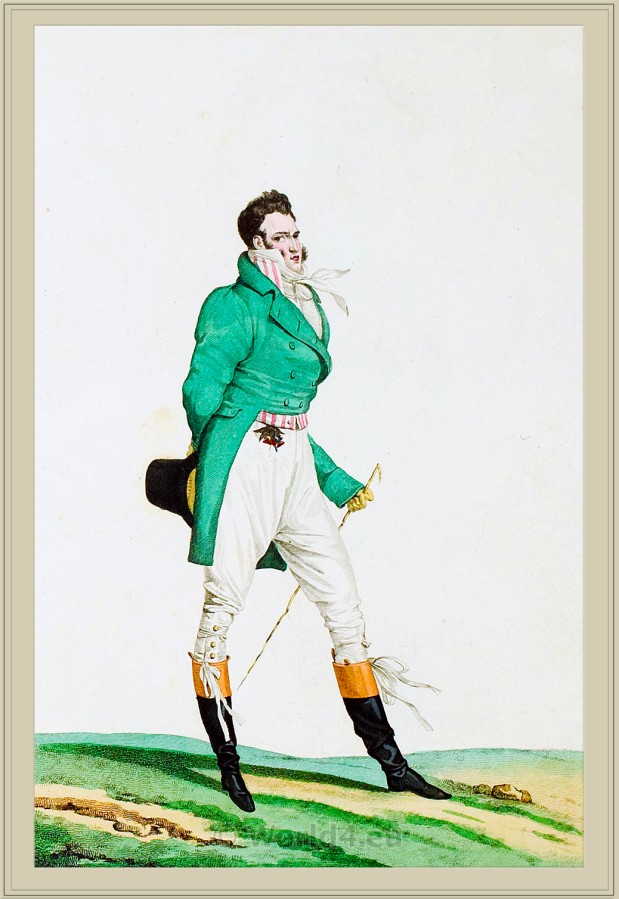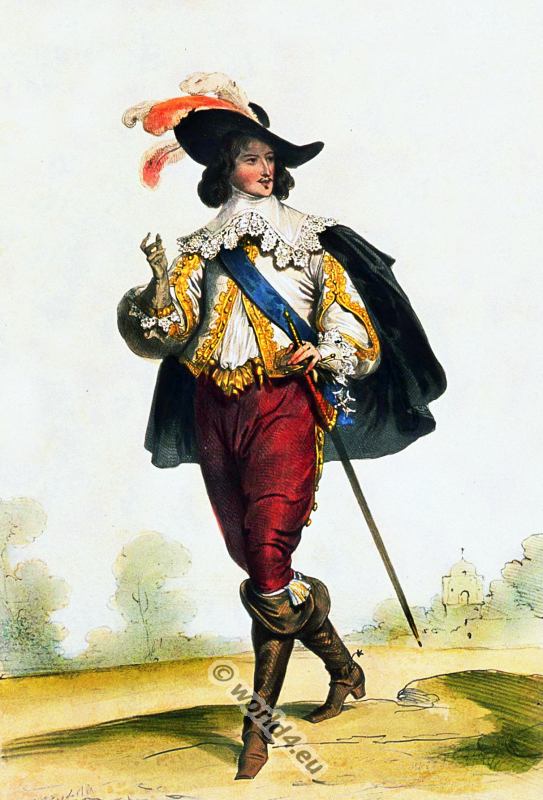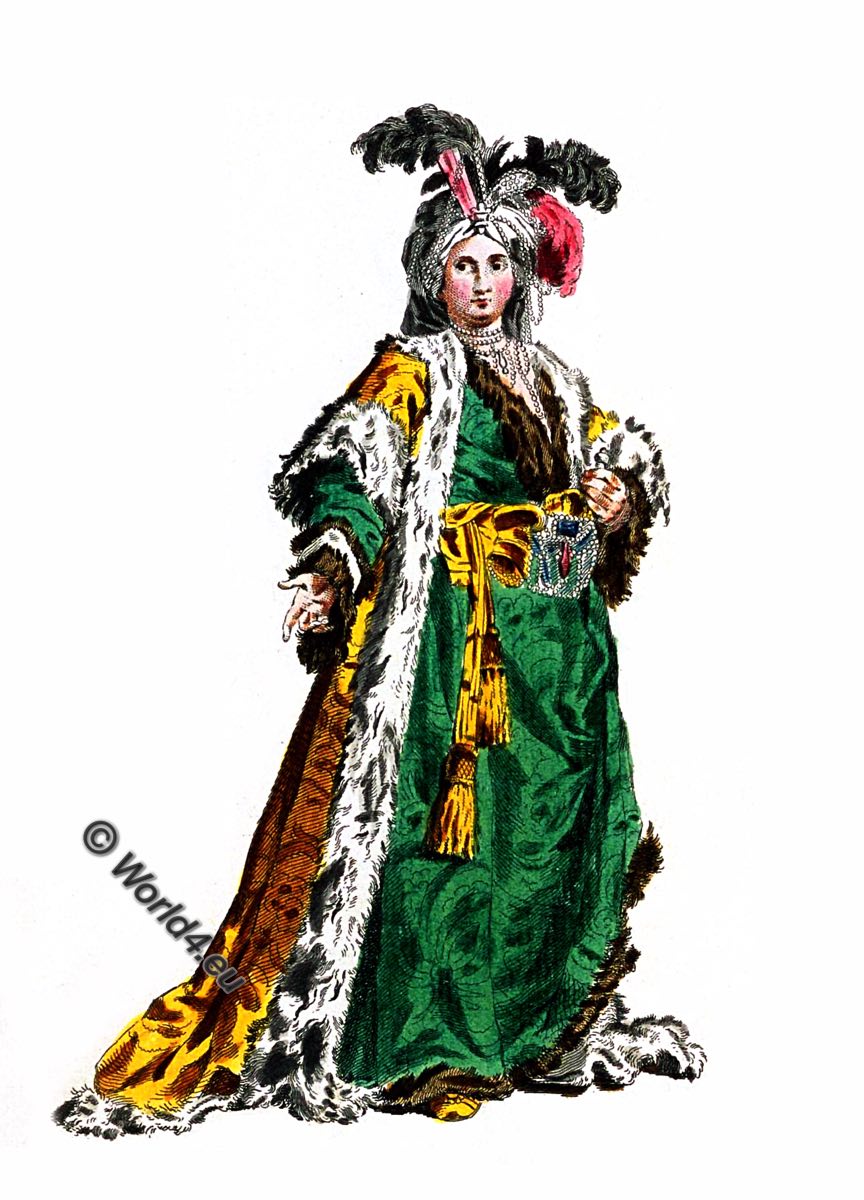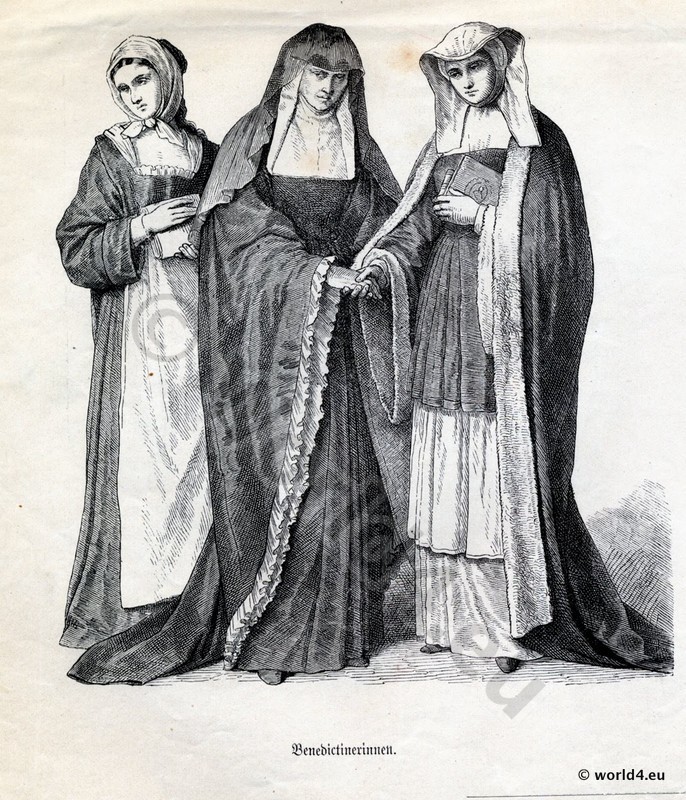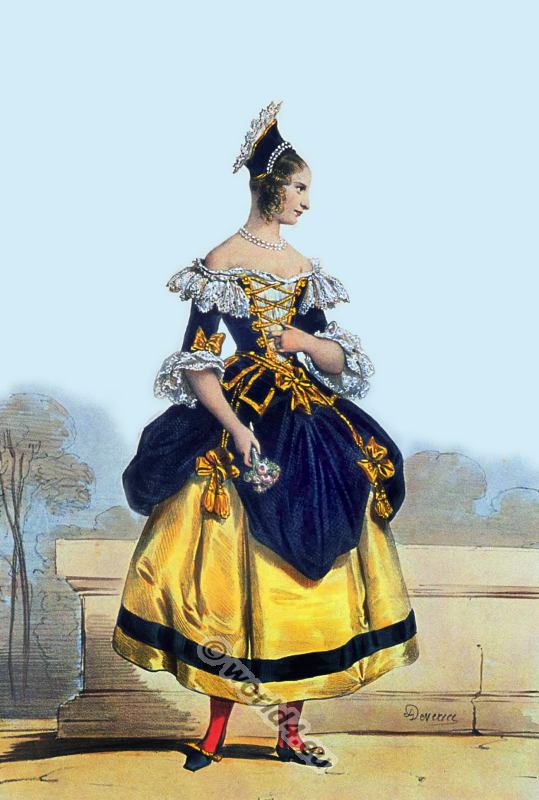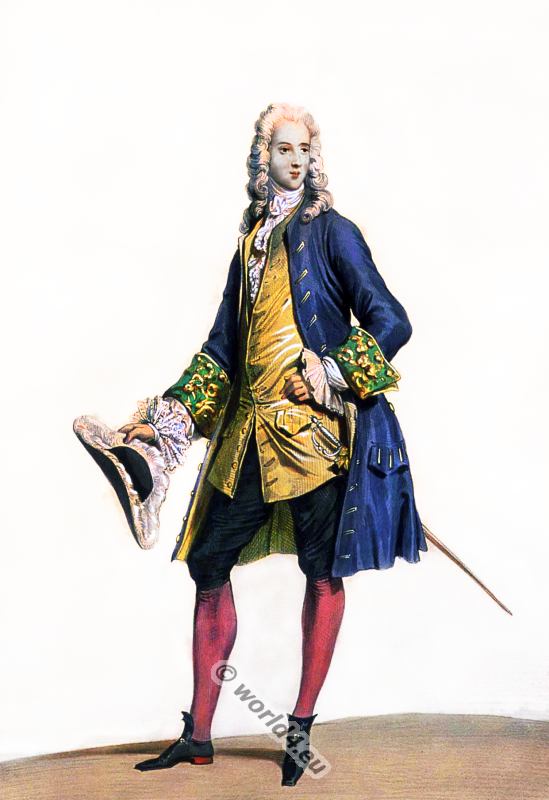Costume Habit vert saute culotte de Casimir. Cravate à oreilles de lièvre.
Source: Les “Incroyables et Merveilleuses”. Published 1814 by Pierre de La Mesangere. Engraved by George-Jacques Gatine. Drawings by Horace Vernet.
Related:
Louis XIV. , Louis XV. , Louis XVI., Baroque, Rococo, Directoire, French Revolution, Regency, Empire, Restoration or Romanticism fashion era. German Biedermeier.
- The French Fashion History.
- Reign of Louis XIV. 1643 to 1715
- The Reign of Louis XV. 1715 to 1774.
- Reign of Louis XVI. 1780 to 1789.
- The French Republic 1789 to 1802.
- Timeline of the French Revolution 1789 – 1799.
- Les Modes sous la revolution 1792-1799 by Paul Louis Victor de Giafferri.
- Reign of Napoleon I. 1804 to 1814. France empire.
- Reigns of Louis XVIII. and Charles X. 1815 to 1830. Restoration, Romanticism
- Fashion in the Reign of Philippe. 1830 to 1848. Victorian era. Romanticism fashion.
- The Second Republic. 1848 -1851. Victorian era. “Second Rococo”.
- The use of the Corset in the reign of Louis XVI.
- Ladies hat styles from 1776-1790 by Rose Bertin.
- Fashion under the French revolution 1789 to 1802.
- Paris fashion 1793 to 1795. French revolution.
- The Execution of the King Louis XVI.
- The Execution of Marie-Antoinette.
- The Incroyables and Muscadins. The French directory dandies.
- Nymphs and Merveilleuses. By Octave Uzanne.
- Fashion in Paris after the Revolution. By Octave Uzanne. 1796-1800.
- Portraits by people during the French Revolution
- The Gallery of Fashion. by Nikolaus von Heideloff, London.
- Comparison of the French and English modes. 1808 to 1815
- The Salon of Madame Récamier during the French Revolution.
- The Salons of Paris before the French Revolution.
- Caraco a´la francaise in 1786.
- The Evolution of Modern Feminine Fashion 1786.
- Fashion in Paris and London, 1780 to 1788.
- Historic hairstyles from Ancient times to the Empire.
Discover more from World4 Costume Culture History
Subscribe to get the latest posts sent to your email.

